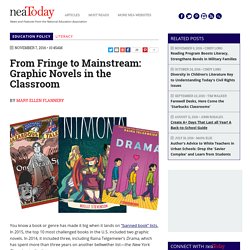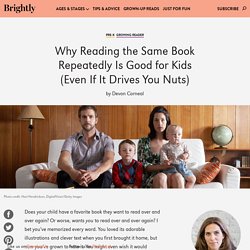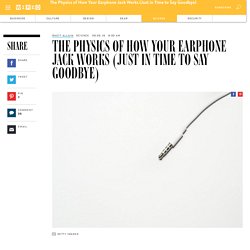

Brain Maturity Extends Well Beyond Teen Years. The Top 10 Brunch Spots In Jersey City, New Jersey. From Fringe to Mainstream: Graphic Novels in the Classroom. You know a book or genre has made it big when it lands on “banned book” lists.

In 2015, the top 10 most challenged books in the U.S. included two graphic novels. In 2014, it included three, including Raina Telgemeier’s Drama, which has spent more than three years on another bellwether list—the New York Times bestseller list. What leads to a book being challenged? Nobody challenges books they’ve never heard of . . . so popularity, for one thing.
But also, according to an American Library Association analysis, books by authors of color—and those including issues or themes that concern communities of color—are more likely to be challenged and banned. These same attributes also make them interesting to English teachers. “I believe they’ve become much more mainstream,” says Beth Sanderson, an English teacher at Swanson Middle School in Arlington, Virginia. Other questions educators might consider for students to answer: How does the author use color? Why Reading the Same Book Repeatedly Is Good for Kids. Does your child have a favorite book they want to read over and over again?

Or worse, wants you to read over and over again? I bet you’ve memorized every word. You loved its adorable illustrations and clever text when you first brought it home, but now you’ve grown to hate it. You might even wish it would disappear forever. I feel your pain. Vocabulary and Word RecognitionThe more a child reads, the larger their vocabulary becomes. Pattern and RhythmHearing favorite stories read aloud helps children become aware of the pattern and rhythm of text. FluencyFluency is the ability to read text “accurately, quickly, and with expression.” ComprehensionReading comprehension is the ability to understand all the components of a story — from plot to character development to symbolism. ConfidenceWith fluency and comprehension comes greater reading confidence. 16 skills students need to learn today to thrive tomorrow.
The gap between the skills people learn and the skills people need is becoming more obvious, as traditional learning falls short of equipping students with the knowledge they need to thrive, according to the World Economic Forum report New Vision for Education: Fostering Social and Emotional Learning Through Technology.

Today's job candidates must be able to collaborate, communicate and solve problems – skills developed mainly through social and emotional learning (SEL). Combined with traditional skills, this social and emotional proficiency will equip students to succeed in the evolving digital economy. What skills will be needed most? An analysis of 213 studies showed that students who received SEL instruction had achievement scores that averaged 11 percentile points higher than those who did not. And SEL potentially leads to long-term benefits such as higher rates of employment and educational fulfillment. License and Republishing. The Physics of How Your Earphone Jack Works (Just in Time to Say Goodbye) It doesn’t matter if you call it an earphone or headphone jack—it’s still on just about every smartphone.

With rumors that Apple will kill the the earphone jack on the iPhone 7 to make it thinner, I think this is a good time to look at this surprisingly simple piece of technology. It’s all about a complete circuit At the most basic level, an earphone is a loop of wire with current running through it. This electric current in the loop then interacts with a permanent magnet which in turn pushes the air—that’s sound. Yes, I left out a lot of the details, but that’s enough for now (and there are other ways to make a speaker, but this is the most common). Worried face: the battle for emoji, the world's fastest-growing language. Had Shigetaka Kurita realised when he sat down to design the first emoji that he was laying the foundation for what would become the world’s fastest-growing form of communication, he might have chosen his icons a little more carefully.

Kurita’s original 176 designs, which launched in February 1999 for Japanese mobile phones, were weirdly specific, including no fewer than five phases of the moon, three timepieces (watch, clock, sand-timer) and two states of umbrella (open, closed). Unmoderated by any panel, Kurita’s choices reflected his priorities and predilections, producing a singular suite of icons that, against the odds, proved universally handy.
Today, there are now more than 1,800 emojis, which are estimated to be used by more than 90% of the world’s online population. Ezra Jack Keats’ The Snowy Day is a model for treating black characters in children’s books. I Can't Even with Librarians Who Don't Read Diversely. Now Arriving on the New York Subway: Free E-Books, Timed for Your Commute. But there is a difference between the e-books on Penguin Random House’s own website and the 175 selections on Subway Reads.

The ones on Subway Reads will be free. “When e-books first came out, everyone thought they’d replace the book,” Mr.